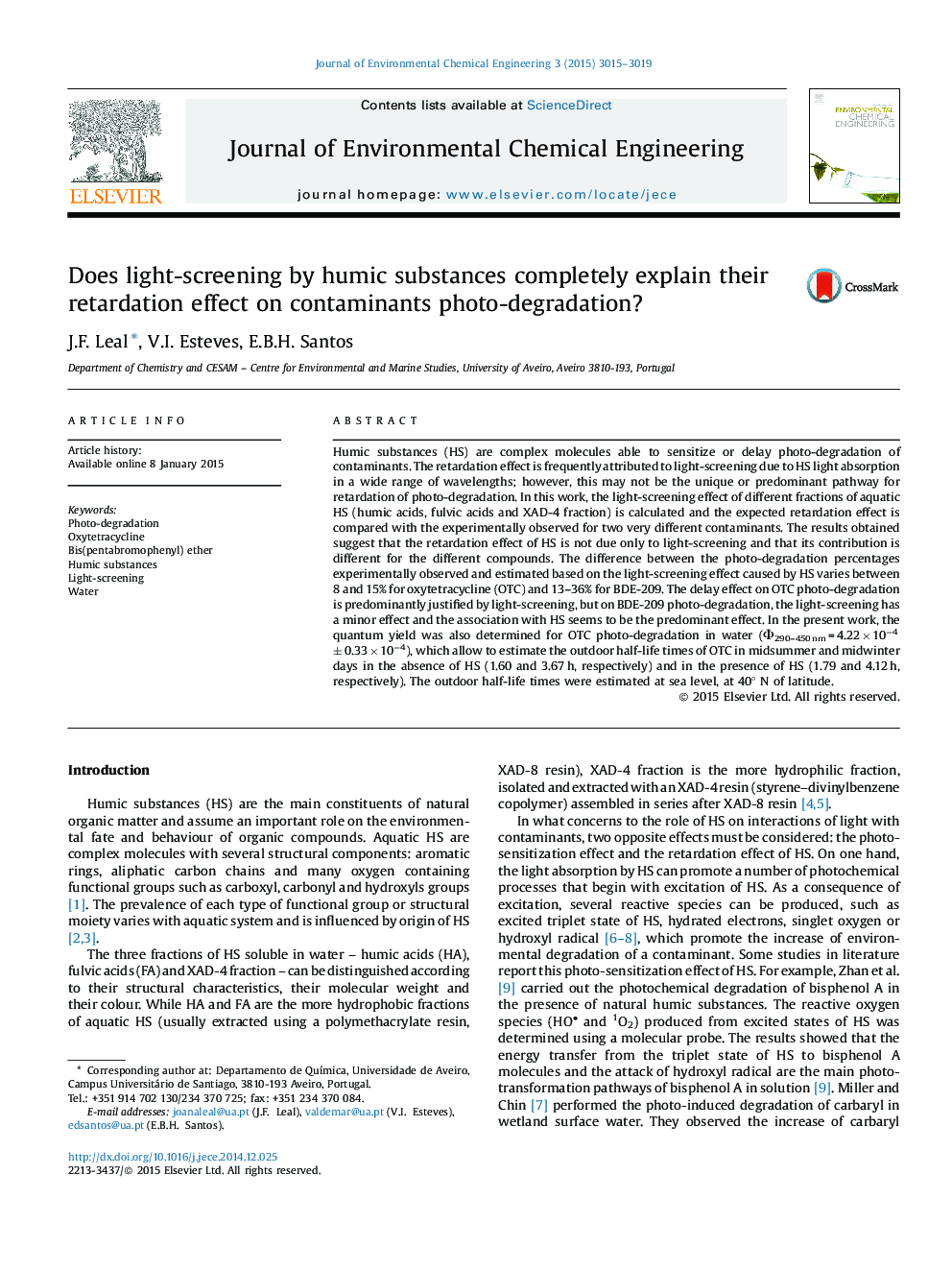| کد مقاله | کد نشریه | سال انتشار | مقاله انگلیسی | نسخه تمام متن |
|---|---|---|---|---|
| 221726 | 464264 | 2015 | 5 صفحه PDF | دانلود رایگان |
Humic substances (HS) are complex molecules able to sensitize or delay photo-degradation of contaminants. The retardation effect is frequently attributed to light-screening due to HS light absorption in a wide range of wavelengths; however, this may not be the unique or predominant pathway for retardation of photo-degradation. In this work, the light-screening effect of different fractions of aquatic HS (humic acids, fulvic acids and XAD-4 fraction) is calculated and the expected retardation effect is compared with the experimentally observed for two very different contaminants. The results obtained suggest that the retardation effect of HS is not due only to light-screening and that its contribution is different for the different compounds. The difference between the photo-degradation percentages experimentally observed and estimated based on the light-screening effect caused by HS varies between 8 and 15% for oxytetracycline (OTC) and 13–36% for BDE-209. The delay effect on OTC photo-degradation is predominantly justified by light-screening, but on BDE-209 photo-degradation, the light-screening has a minor effect and the association with HS seems to be the predominant effect. In the present work, the quantum yield was also determined for OTC photo-degradation in water (Φ290–450 nm = 4.22 × 10−4 ± 0.33 × 10−4), which allow to estimate the outdoor half-life times of OTC in midsummer and midwinter days in the absence of HS (1.60 and 3.67 h, respectively) and in the presence of HS (1.79 and 4.12 h, respectively). The outdoor half-life times were estimated at sea level, at 40° N of latitude.
Journal: Journal of Environmental Chemical Engineering - Volume 3, Issue 4, Part B, December 2015, Pages 3015–3019
